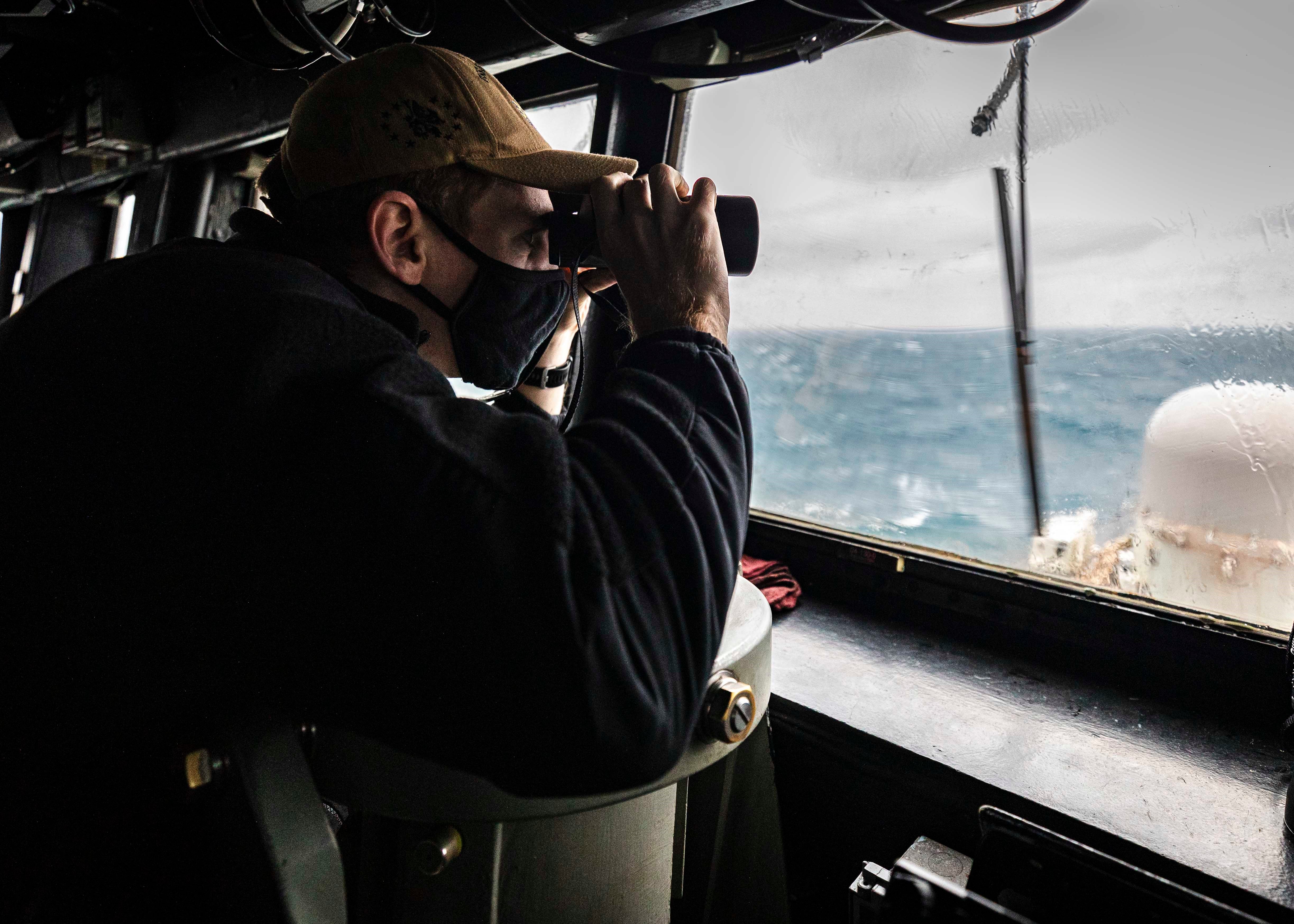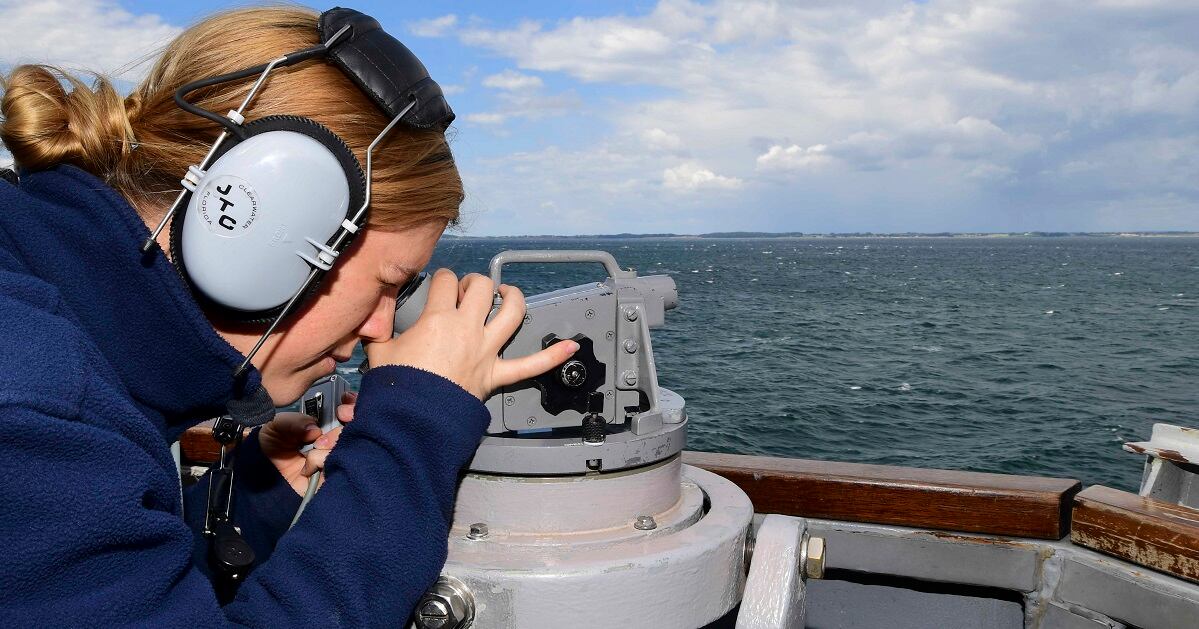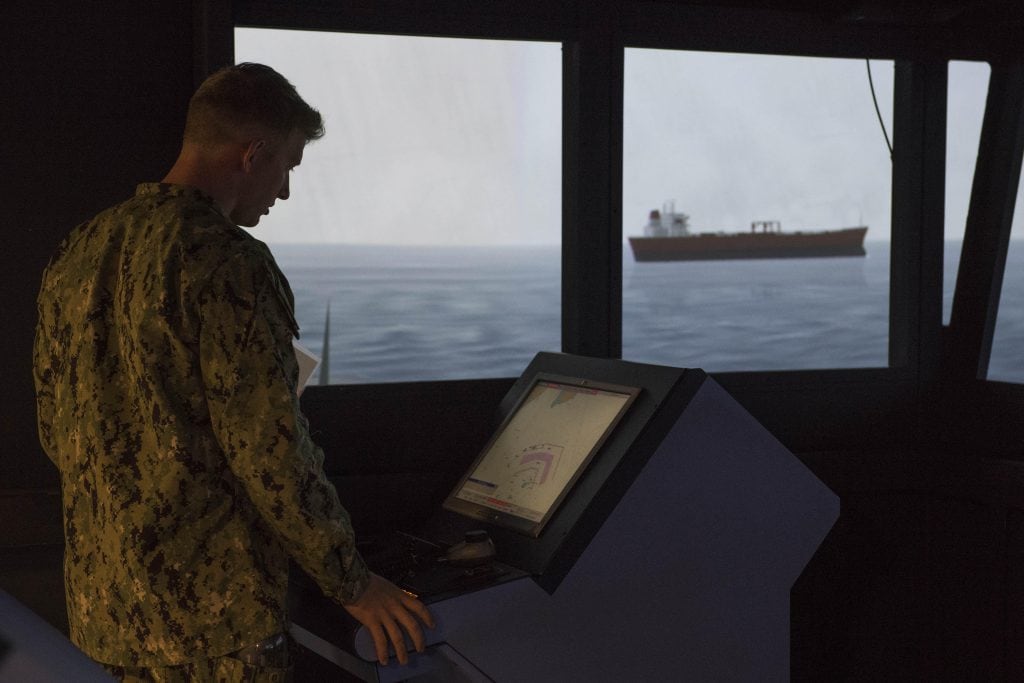For one Navy lieutenant, there are certain aspects of life as a surface warfare officer, or SWO, that can’t be beat, such as globe-spanning deployments and pulling into exotic ports.
“People join the Navy to see the world,” the O-3 with eight years under her belt told Navy Times. “But that’s only nine months of your entire cycle on the ship.”
For SWOs at her level, even those nine months deployed are full of endless paperwork, assorted busywork and zero sleep, in addition to the manning shortfalls and frenzied operations tempo that plague surface fleet sailors of all ranks.
“It’s a shitty job, to be honest,” said the lieutenant, who requested anonymity because she was not authorized to speak about her experience. “You see these pilots who get to fly, and they love flying. (Commanding officers) love driving the ship. But me, as a middle manager on the ship, I don’t sleep. And the CO sleeps less than that.”
SWOs are the backbone of the Navy’s surface fleet. But the sea service is struggling to retain them at the end of their contracts, and women are leaving at especially high rates, according to a recent Government Accountability Office report.
That report found that the SWO retention issue has several causes, with some facets appearing more fixable than others, but it remains unclear whether Big Navy will be amenable to altering the SWO career path, which has steamed along largely unchanged for more than 100 years.

SWOs leave the community earlier in their careers and at a higher rate than those in other type communities, such as the submarine and aviation sectors, the report states.
All told, just 33 percent of SWOs remain in the community after a decade of service, around their first major career milestone, compared to 45 percent of officers in other Navy communities, according to the GAO.
At the same time, just 12 percent of female SWOs remain in the community after that time, compared with 39 percent of male SWOs, according to the report.
Navy officials told GAO they would like to improve SWO retention beyond the mandatory service requirement, and that other initiatives are at various stages of implementation, but the watchdog questions the sea service’s efforts.
“U.S. Navy officials are aware of the SWO communities’ high separation rates but have not used existing information to develop a plan with clearly defined goals, performance measures that identify specific retention rates or determine if initiatives to improve retention are working as planned,” the report states. “Doing so would better position the U.S. Navy to more effectively meet its personnel needs, capitalize on the significant investments made in training SWOs, and retain a more diverse and combat-ready force.”

In order to get more junior SWOs ship-driving time and keep them in the force, the Navy has in recent years revamped career paths while increasing retention bonuses at the critical career juncture when a SWO heads off to department head school around the eight-year mark, according to Rear Adm. Derek Trinque, a career SWO now serving as the assistant commander for career management at Navy Personnel Command.
Bonuses have been restructured so that SWOs who are more highly qualified for department head school get bigger bucks, Trinque told Navy Times.
Career path changes also ensure that division officer and department head tours involve being part of a ship’s force as opposed to serving on an afloat staff, he added.
“We’re always looking to keep our talented officers,” Trinque said. “I think this is the same across all our communities.”
Too many ensigns
Part of the Navy’s SWO retention issue has to do with a glut of junior officers, according to the GAO.
The Navy, on average, commissions nearly twice as many SWOs each year as it needs to fill junior SWO positions on ships, leaving these newbies to compete for ship driving time or other hands-on experience needed to be a good surface warfare officer, according to both the GAO and several SWOs who spoke to Navy Times.
“This is taking limited underway training opportunities and spreading them thinner than can be sustained,” one SWO told GAO investigators. “This is a huge problem that no one wants to address because SWO retention is so difficult.”
When a bunch of junior officers are all crammed into the same job, it’s hard to convince them that what they’re doing is worthwhile, according to one midgrade SWO, who asked to remain anonymous because he was not authorized to speak.
RELATED

“What kind of rewarding opportunity do you have in the surface fleet if there’s three ensigns to a single billet?” the SWO asked. “If three ensigns are all (auxiliary officer) at the same time, all three of those ensigns feel stupid,” he said. “None of them are actually AUXO.”
From fiscal 2017 to 2021, GAO found that the Navy commissioned an average of 946 SWO ensigns a year, exceeding the number of required ensigns by about 85 percent.
For example, the destroyer Mustin averaged 18 SWO trainees aboard the ship when it only required six during the first quarter of 2020, while the cruiser Monterey averaged 21 such trainees when it only had eight slots, according to GAO.
Big Navy does this because of how many SWOs leave around the eight-year mark of their career, the report states.
While noting that he does not know what current SWOs are enduring, retired SWO Bradley Martin —who spent two-thirds of his 30 years at sea — said that over-commissioning has gone on for a long time to ensure there are enough department heads down the career line.
In other words, “attrition is built into the system,” said Martin, now a senior policy analyst with the Rand Corp. and director of their National Security Supply Chain Institute.
“This creates a self-fulfilling prophecy,” he added. “Poor job satisfaction, diminished training opportunity, big crowds of people on the bridge and in other watch stations pretty much induces attrition.”
RELATED

Newly minted SWOs can feel like they have been dropped into the middle of the ship with little to no guidance from higher-ranking SWOs dealing with their own deluge of work, according to the lieutenant, who recalled having “a made-up job” on her first ship.
It’s often easier for more seasoned SWOs to just do jobs themselves than take the time to teach a junior officer how to do it.
“We say that SWOs eat their young, and it’s true,” the lieutenant said. “They’re essentially told to figure it out. It’s a double-edged sword of people in the upper chains having no time to train the ensign and then they get mad because they’re not trained.”
Some go-getter ensigns — the type of officer the Navy would want to keep — end up eyeing the exit because of the lack of meaningful work or purpose, she said, while some who are content to do nothing end up sticking around. The lieutenant recalled the situation of one junior officer on another ship who also had no job.
“She was just walking around asking people if they needed help,” the lieutenant said. “She had nothing to do.”
Junior officers also suffer from imposter syndrome, according to the midgrade SWO, who recalled his own early days.
“I felt really dumb,” the SWO said. “I kept getting popped from job to job. You spend so much time trying to cultivate value in yourself.”
A lot of junior officers never get to do the job they thought they were going to do, he added.
“It’s called a surface warfare officer,” he said. “A lot of people go through their entire time as a (division officer) and never encounter that ‘W’ at all. It’s the surface admin officer or the surface PQS officer. When does the rubber meet the road? It never does.”

The midgrade SWO attributes a lot of these problems to the diminished fleet size and not having enough ships to accommodate everyone and allow junior officers the chance to really learn.
“We’re in a constant bum rush to deployment … on a sprint to meet all these requirements the fleet doesn’t have the capacity to reasonably meet,” he said. “You’ve got a bunch of junior officers in washed-out jobs that don’t really reflect the kind of opportunity we’d want them to have, on ships that are strung out and undermanned.”
“None of that is a recipe for success.”
Still, the SWO said he is hearing good things about reforms to basic and advanced division officer courses, as well as increased simulator training the Navy stood up following the 2017 collisions.
“If the fleet and fleet manning were different, I think that the training that’s in place, all the simulators, I think we could do a really good job,” he said. “We just don’t have the time and we don’t have the ships. … It’s just this death spiral of personnel and force structure decisions.”
Navy officials told GAO they were aware that “over-commissioning” junior SWOs increases competition aboard ships at sea.
Those officials argued to GAO that such practices can be beneficial, “as it provides additional personnel to conduct ship-board duties while at sea.”
The sea service has expanded the amount of classroom training for junior SWOs, while constructing new simulator-based training facilities and no longer assigning junior SWOs to ships in extended maintenance.
Junior SWOs have also had their first at-sea assignment lengthened from 24 months to 30 months, according to GAO.
“However, these changes may have exacerbated the issue of hindering training opportunities at sea, since they ultimately reduce the number of ships new officers can serve aboard, further increasing the number of new SWOs aboard ships at sea,” the report states.
The midgrade SWO said he thought the Navy would be courting disaster if it started commissioning fewer junior SWOs, because the results would be horrendous if the same number quit down the line, leaving massive holes in the force.
Adding to the glut is the fact that more than 20 percent of newly commissioned SWOs are on a career path that will see them leave the SWO world and transfer into other Navy jobs that don’t accept newly commissioned junior officers, such as intelligence and cryptologic warfare.

The recent GAO findings are not news for the Navy.
After the 2017 fatal ship collisions, the Navy’s Strategic Readiness Review noted that over-commissioning junior SWOs “directly contributed to declining SWO readiness,” according to GAO.
A parallel Comprehensive Review “noted that the U.S. Navy’s practice of over-commissioning SWOs makes it challenging to build proficiency and experience in ship-driving.”
The Navy could better capture the effects of these practices if it pulled data from the Surface Warfare Mariner Skills Logbook, which since 2018 has required SWOs to document their ship-driving and related experience in a handwritten logbook.
But GAO found that to date, the Navy hasn’t analyzed logbook data for insightful trends.
SWOs and family don’t mix
While sexism remains a recurring concern in a male-dominated military, the female lieutenant said she doesn’t think that explains why female SWOs leave the Navy at such a clip.
“They want to leave because they want to have a family,” she said. “And SWO life doesn’t offer a good family environment.”
If a female SWO is on sea duty aboard a ship and becomes pregnant, she is removed from the ship but still listed as part of the ship’s crew, and it takes time to refill the billet, according to the lieutenant.
This leads to resentment among the other SWOs on the ship because they must pick up the slack, she said.
“I know of women who have purposely gotten pregnant and women who have accidentally gotten pregnant, and they were both treated like trash,” she said. “Most women want to get out so they don’t have to plan their family life around when the Navy allows them to have a baby.”
While female SWOs aren’t sticking around, the number of SWO women is more than three times higher than female representation in other Navy officer communities, the GAO found.
But while Naval Surface Forces gathers information on SWO separation rates by gender, “it has not used this to develop a plan to improve either overall SWO retention or female SWO retention,” according to the GAO.
“Navy officials told us that they have not identified specific actions to increase female SWO retention rates, and they do not plan to identify specific actions that may increase female SWO retention rates because they do not consider gender as a factor when developing plans to increase retention,” the report states.

Generalist vs. specialist
An age-old debate in the SWO community revolves around whether officers should be generalized, jack-of-all-traders or authoritative specialists on a given ship system.
Big Navy has long snubbed the idea of SWO specialization, but by a margin of four to one, SWOs surveyed by GAO said they would prefer specialized career paths.
Junior officers reported a higher likelihood of staying in if they could specialize as well.
“The generalist SWO career path may have worked well 50 years ago, but waterways are becoming increasingly congested … combat systems and tactics are becoming more technical and pressurized with our now-peer superpowers like China, and we generally have too few resources (people and ships) to meet the Combatant Command operational demands,” one SWO told the GAO. “We should have specialized SWOs in ship navigation, tactics and combat systems employment, and in engineering.”
Part of the rationale for a generalist path is that a ship’s commanding officer needs to be knowledgeable on all parts of their ship, but according to the GAO, just 22 percent of surveyed SWOs wish to become commanding officers.
Junior SWOs indicated to the GAO that they were more likely to stay in if they could be on a path “that does not provide the opportunity to command a ship.”
Count the female lieutenant among those in support of SWO specialization.

“It should be a topsider and an engineer,” she said. “A topsider who has spent [his or her] whole career fighting the ship should command a ship.”
“I’ve personally had COs who did their whole careers as engineers, and then they know nothing about communications or satellites or guns because they’ve only done engineering,” she added.
The Navy has failed to assess these alternatives, according to the GAO.
“Without evaluating other career and proficiency models for potential benefit, the U.S. Navy may miss opportunities to develop and retain competent and proficient SWOs,” the report states.
Rear Adm. Trinque defended the generalist path in an interview with Navy Times and pointed out that junior SWOs who currently don’t want to command a ship may feel differently further along in their careers.
“I recognize the surveys and the work the GAO has done, and I think it would be interesting to track some JOs and whether their attitudes change over time,” he said.
To Martin, the retired SWO now at Rand, a major problem in SWO retention and career progression remains “the lack of clarity about what the Navy would like its officers to do.”
“Surface warfare officers by and large do not spend most of their careers doing surface warfare,” he said. “They’ll be performing subspecialty billets or serving on headquarters staffs or learning strategic concepts, which are all good things, but do take time and may sometimes have a whole lot more to do with promotion potential than service on ships.”
Trinque defended those off-the-water aspects of a SWO career for the breadth of experience it offers an officer.
“The ability of a SWO to do that in a flexible way is far, far greater than that of a naval aviator and submariner,” he said. “Nothing against those communities.”
Geoff is the managing editor of Military Times, but he still loves writing stories. He covered Iraq and Afghanistan extensively and was a reporter at the Chicago Tribune. He welcomes any and all kinds of tips at geoffz@militarytimes.com.





